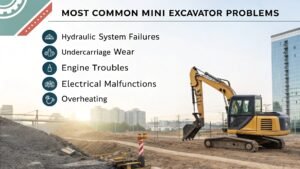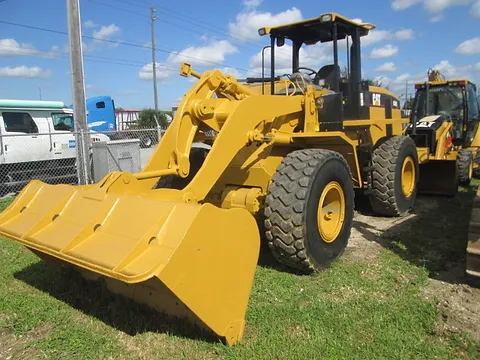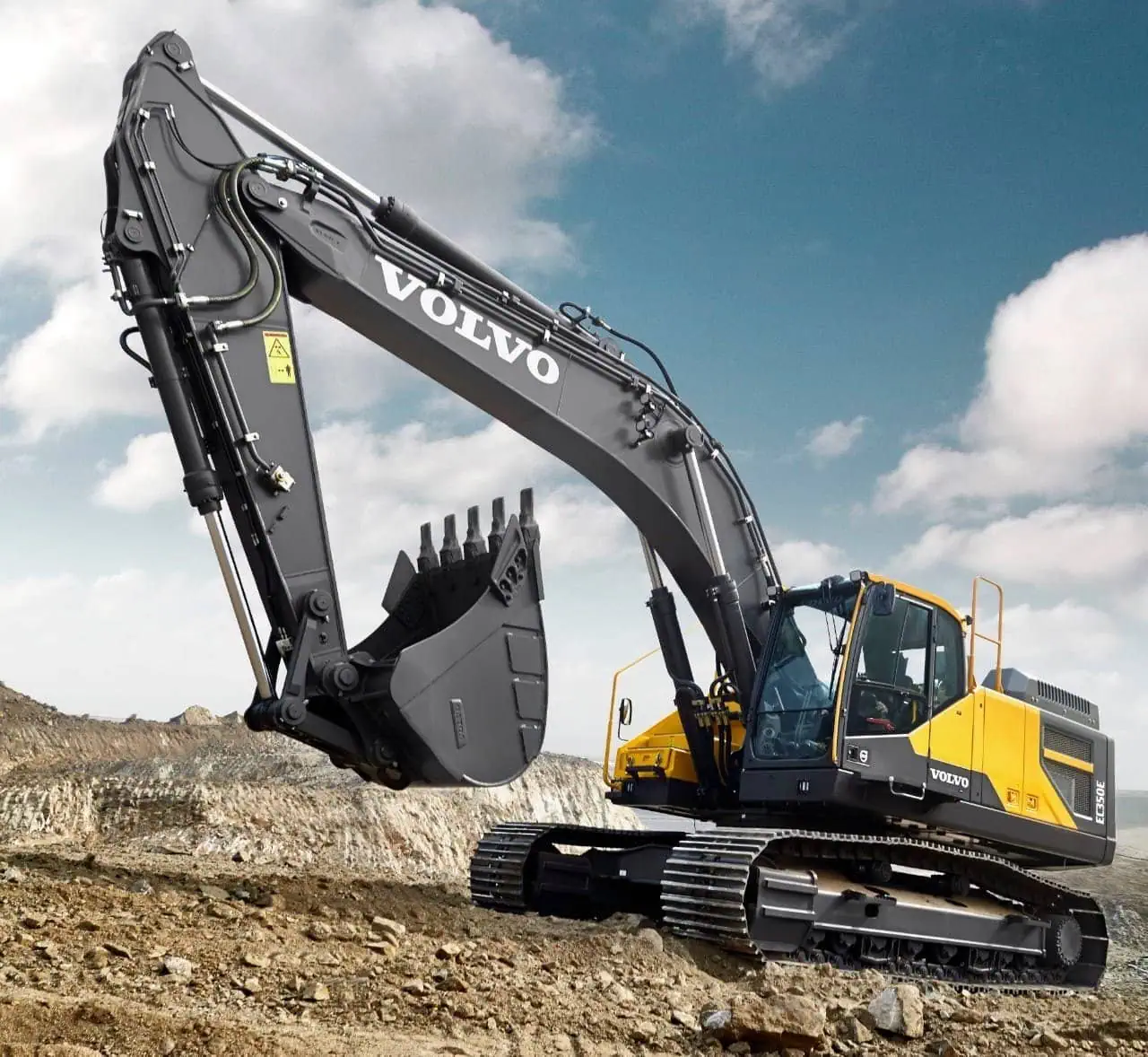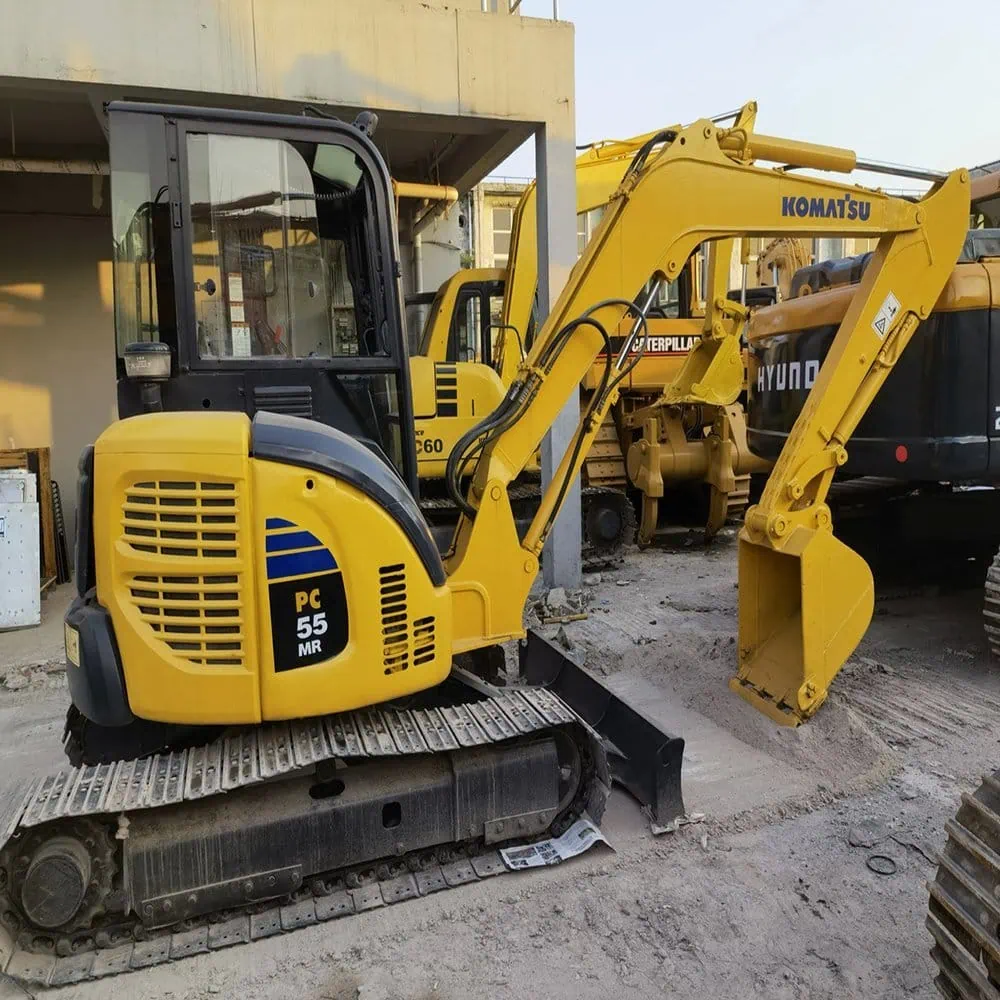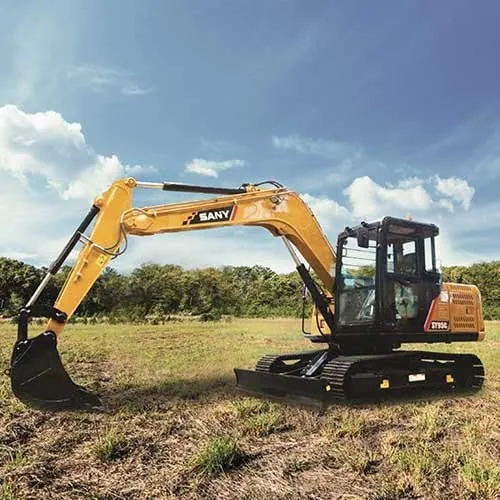Struggling to reach the right bucket height? Having trouble driving when the bucket’s up? You picked the wrong size wheel loader. Picking the right wheel loader size is the key. The wrong size loader can hit your fuel efficiency, productivity, and operating costs. But the right bucket choice can save you time, money, and make everything easier.
Choosing the right wheel loader size is crucial for improving project efficiency. Whether you’re handling large-scale construction or smaller urban projects, the correct loader helps optimize fuel consumption, productivity, and cost-efficiency. In this guide, we’ll show you how to assess your needs and select the best wheel loader size for maximum performance.
Let’s dig into why wheel loader size matters and how to get the right one.

Índice
AlternarWhy Does Wheel Loader Size Matter for Work Efficiency?
Picking the right wheel loader size is one of the most important choices you’ll make when you buy or rent your machine for this job. The right loader is what allows you to maximize the machine’s performance and your work efficiency. The wrong size loader will hose you on time, fuel, and make your operating costs go through the roof.
Wheel loader size directly impacts several key factors:
Capacidade de elevação
If you pick a loader that’s too small, you can’t handle the material flow to get the job done. So, you work less and waste a ton of labor hours to push or bucket load. If you pick a loader that’s too big, you’re not efficient for all the soft tasks you may do or moving the machine for small handling. You’re burning more fuel than you’ve got to.
Eficiência de combustível
Larger machines often consume more fuel. If you’re not using the loader for what it’s designed to do, you’re burning fuel. On the other hand, smaller loaders tend to be more fuel-efficient but may not have the lift capacity for all the heavy stuff you must move.
Manobrabilidade
Larger loader sizes will struggle in a really tight space if you’re doing more urban or confined site work. On the other hand, a smaller loader like a CAT 926M with a black-edge bucket, a set of forks, and a quick coupler to snap a blade on or off is more maneuverable.
The goal is to pick the correct wheel loader size so the machine will operate as efficiently as it can. You want to find the balance of enough lift, not burning excess fuel, and the best maneuverability for your machine.

What Factors Should You Consider When Choosing the Right Wheel Loader Size?
The choice for the perfect wheel loader size is significant. If you make the right decision, everything is great. If you make the wrong decision, you may be wasting money, time, or resources. The choice for the perfect wheel loader size is big. If it’s too small, you won’t be able to do what you need to do, costing you time and paying people longer. If it’s too big, you’re burning more fuel than you need to because it’s not working hard enough. The right choice for wheel loader size can save you time, money, and make you money all at the same time.
Project Type
The size of the project you’re working on is the number one factor in determining the right size of wheel loader. If you’re working on a large project, such as a municipal or mining job, a lot of times you’re going to want a bigger machine like the CAT 950M. You need it to have the horsepower to move the material a longer distance; you need the capacity to carry more material in the bucket and potentially over the length of the job. If you’re doing smaller projects in a city, like a pretty cool city construction carry, or you’re in the landscaping business, you’re going to want a smaller machine, such as the CAT 926M.
Terrain
The next thing that makes a big difference in the size of wheel loader you need is what the machine will be operating on. More commonly, this comes into play with whether you’re going to be on rough or even ground, or in our area where we do a lot of mining, where ground conditions are questionable. If a loader is going to be pushing across very rough, very uneven ground, or you’re expecting to lift some really heavy items, upsize your machine.
The reason is you want the larger machine weight to keep it stable and you need the extra power to push that machine out of a hole if you get in one. If you’re going to be working on good, flat, hard ground most of the time, maybe a smaller machine will work. The CAT 950M is designed for a lot more of the rougher work and the rougher terrain and the mining where you need to carry material. The CAT 926M is our more compact machine, better for getting into the city and for working in smaller confined spaces.
Load Capacity
The next thing that’s a big deal is how much material the thing can lift. If you’re constantly picking up the kind of stuff where you need to lift a lot of it and move it away, then maybe a CAT 950M is what you need. It’s got the capacity to carry that maximum load further than the other machines. If you’re shoveling gravel or sand and need to transport it to and from a pile, the 926M or maybe the 918M may be all you need. If the only rocks you move are fist-sized and get cleared as you excavate the rocks, then whatever is the smallest machine we made yesterday morning will work all day long for you.
Operating Conditions
The size of the area you’re working in is the next thing that makes a big difference. If you’ve got to work in small areas, confined areas, or are trying to maneuver a machine through a crowded, narrow job site, then a smaller machine like a CAT 926M or our 918M is better. They’re smaller, turn quicker, and even have the Z-bar loader linkage so when I curl my bucket, it raises as well on our compact machines.

How Can You Determine the Ideal Wheel Loader Size for Your Project?
Choosing the right wheel loader size for your project requires a systematic approach. Here’s how you can determine the best option for your specific needs:
Assess Your Project’s Needs
The bottom line is you want to size the machine correctly. You want to have enough machine there to do the work you need, and you also want to be able to get to the equipment and maintain it.
Evaluate Load Requirements
The last deal that you need to think about is the materials you are handling, which is a mixture of weight and volume. If you’re handling mostly smaller rocks, but you fill up a bucket, and that load is heavy, then you value the machine in terms of weight.
Consider the Terrain
Next comes the ground conditions. Does the ground have a bunch of yahoos? If the answer is yes, you’re going to need a bigger machine because a bigger machine is more stable than a smaller machine. Visit a large construction site that has a ton of trucks running around it.
Determine Frequency of Use
How often will the loader be used for each task? A loader that will be heavily used in rough conditions may require the next larger wheel loader size to be reliable and efficient over the long haul.
By taking all of these factors into account, you can make an informed decision about the best wheel loader size for your project.
What Are the Benefits of Choosing the Right Wheel Loader Size?
Selecting the right wheel loader size offers several key advantages that can significantly improve the efficiency and success of your project:
Increased Productivity: The right-sized loader gets more work done in less time. Whether using a CAT 926M for the lighter stuff or a CAT 950M for the heavy lifting, the loader model is designed to work best when working in specific job requirements.
Cost Savings: The correct sized loader means you’ll consume less fuel and see lower maintenance costs. A loader that is too large for the job wastes gas, while a loader that is too small won’t get near as much done, causing delays and increased labor costs.
Better Maneuverability: The right size means you can more easily get in and out of tight places, as well as on rougher, uneven ground. A machine that’s too large is just too large to make quick work of the tight spots, meaning you’re not as efficient as you could be and the machine could be at risk of breaking things or damaging itself and surrounding structures.
Reduced Wear and Tear: Making a machine do a job that it’s not the right size for is going to put unnecessary strain on all its components and parts, which will lead to more repairs, shorter machine life, and increased downtime.
What Are the Risks of Choosing the Wrong Wheel Loader Size?
Selecting the right wheel loader size is vital for optimal work efficiency. However, selecting the wrong size opens you up to significant exposure:
Overworking a Small Machine: If you pick a machine that is too small for the job, you will irritate it and it’s going to break down more often, costing you in maintenance bills and downtime.
Waste Gas and Resources: A machine that’s too big for the work at hand is going to gulp gas and resources you didn’t need to burn through. Using a CAT 950M to do a job that should have been done by a smaller CAT 926M is
going to cost you more to operate.
Increased Wear and Tear: Making a machine hard-down do a job it isn’t the right size to do will cause premature wear on tires, hydraulics, and other systems that will cost you more.
Avoiding these risks comes down to carefully assessing the specific needs of your project and selecting the right wheel loader size to match those demands.
How Do Different Wheel Loader Sizes Compare in Terms of Cost and Performance?
Each wheel loader size has its own pros and cons. The big loaders cost more upfront and burn more fuel, but they move more dirt, and they move it faster, which makes the big loaders move more dirt every day for you. For instance, do you yearn for a CAT 950M that has all the power in the world and handling capability you’d ever want? Gorgeous, but it’s overkill for small work, or palettes worth of materials you need to move around tight loading docks and storage yards.

How to Optimize Long-Term Efficiency with the Right Wheel Loader Size?
Once you have the right size wheel loader for your work operations you need to work it to the best of its operational abilities. Keep it maintained. Work it hard with expert skill and care each day.
Regular Maintenance: Keep up with regular checks on tires, hydraulic systems, and engine health to ensure that the loader remains in top working condition.
Avoid Overloading: Overloading the machine can cause excessive wear and reduce its lifespan. Ensure you’re using the right wheel loader size for the material you’re lifting.
Training Operators: Ensure your operators are trained to use the loader efficiently, following best practices to avoid unnecessary strain on the machine.
Conclusão
Choose the right size wheel loader by looking at the work your project demands based on four primary decision factors. Always think about the cost of the overkill wheel loader. Then ponder performance and profit from a properly used machine your size can be a great purchase. And remember if you choose the wrong size, you can create a world of hurt for you and your coworkers. If, though, you choose the right size, the project will move along smooth, on time, and make you dough.If you have any questions, please feel free to entre em contato comigo.



